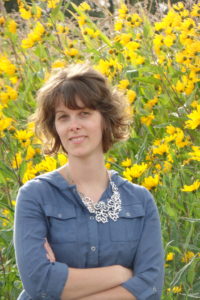When I first started writing back in the dark ages, my scenes were terrible. I didn’t have anything for my readers to look at.
No alluring sunset that reminded the reader of a mixed bag of Starburst, no grassy knoll within the confines of a wooden fence, and certainly no Paint horses with ears pricked forward in earnestness at what they saw.
Setting the scene for your writing requires more than asking six general journalism questions (5 W’s and H).
Accurately setting the scene requires three things:
-
Try to Visit the Area You’re Writing About
If you’re writing about a space abduction, then obviously you are free to use your imagination. But if you’re writing historical or contemporary fiction or memoirs, then accuracy is key. Perhaps you may need to visit the location or setting you’re writing about in your story.
A few years ago, I wrote a short story that finaled in a college commencement contest. In “Puddle of Remorse,” a WWII story set on the American home front, my character was going through the process of canning tomatoes in her farmhouse kitchen. Since I grew up on a farm and canned salsa every summer, I knew the surroundings for the setting I was describing. And for the contest, I scored huge points in the accuracy department because I was familiar with the scene’s surroundings and the location.
The scenes I’m working on now requires much more research because I am not familiar with the location, a polio ward in a hospital in 1943. There’s a trip to my computer desk to search Pinterest and Google for images that suit my setting. Youtube is also a great resource if you’re not able to travel, or if you need visual research for historical details, settings, and places.
What’s even better than Pinterest and Google are the Historical Societies in the area you’re writing about. I contacted my local Historical Society and in just a few questions, I gathered way more information than I needed (which, by the way, is also perfect for future author interviews, blog posts, and making connections with readers who love those little details you had to leave out in your story).
-
Talk to the Locals
Sometimes a quick chat with a local can lead to a lot of helpful information. As writers, it may be out-of-character to step out of the introvert zone and ask a question or start a conversation, but if you take a deep breath and do it, you’ll find it super rewarding. All it takes is walking up to a local, asking one question, and letting them talk the rest of the time! (I’ve had it happen!)
People like to talk about what they know, and it’s so much fun to listen.
For my hospital scene, I took a trip to Facebook and jumped on the post-polio group that I belong to and asked a bunch of questions. Pleasantly, I received a lot of helpful and detailed information for what I’m trying to describe. And, I’m thoroughly excited for the scenes I have the privilege of rewriting!
-
Take Photos of Everything
Even if you don’t like to take pictures—which I can’t imagine writers not liking—bring your camera anyway. You never know what you might find that will help give you a visual image of what you’re writing about. (A specific chair that you want to incorporate into the kitchen, or a restaurant that has the perfect table setting for your character’s first date.) And you can even print out the photo and prop it up at your computer desk for inspiration.
Also, if you have access to grandpa’s or grandma’s family photos, this is gold for you. I have a few photos from my heritage, and I love squinting at the black-and-white photos to get a taste for how to describe what my Great Aunt Icy (yes, that was her name) wore, or how to describe Great Uncle Oscar’s horse racing cart. Tangible is always good. Pinterest is also another great resource—you can become a digital hoarder of so many photos and no one will ever know. (I have a few boards of my own. . .)
Over the years I’ve learned a few things about setting each of my scenes. However, I am not a perfect writer and must go back and edit to make sure each chapter begins with my main character and describes what she sees, and that gives readers something with which to resonate with and enjoy.
So, pull up your current trouble-child scene in Word or whatever platform you use, and happy scene writing and making every scene well worth the reader’s and character’s journey.
Discussion: How do you start your story scenes?
Owner of TM Editorial, Tisha Martin specializes in historical fiction, academic editing, and creative nonfiction. An active member of American Christian Fiction Writers and The Christian PEN, she appreciates the writing and editing communities. By being a writer and an editor, she’s tickled to have the best of both worlds. Tisha is editor and proofreader for beginning and best-selling writers, professional editing agencies, and publishing houses. As Assistant Director of PENCON, a conference for editors, she enjoys organizing the conference, networking, and sharing news on PENCON’s Facebook Page. Connect with Tisha on Facebook, Instagram, or follow her Pinterest board for writers and editors.



 We love helping your growing in your writing career.
We love helping your growing in your writing career.
